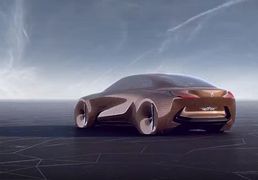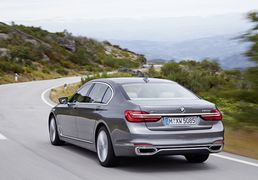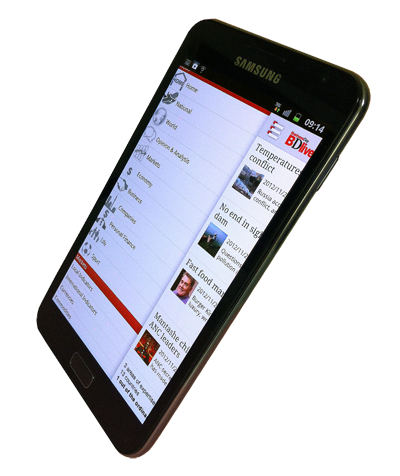TECHNOLOGY: Audi quattro — get to grips with power
by Michael Taylor,
2016-02-25 08:49:53.0
THIS year’s global launch of the A4 Allroad will showcase Audi’s all-new predictive version of the quattro all-wheel drive system.
Claimed to lower fuel consumption and improve traction, the new electro-mechanical system is also almost 4kg lighter and means Audi no longer has a core brand model with the traditional pure mechanical Torsen all-wheel drive setup.
The company will call the system Quattro Ultra to link it to the brand’s most frugal Ultra variants of each model, claiming it saves an average of 0.3l/100km on its in-house test cycle.
The new all-wheel drive system is on its way into the next generation of the Q5 SUV and A5 coupe, Sportback and convertible and in all upcoming versions of Audi’s MLB architecture, where the engines sit lengthways in the chassis.
It will be offered with the seven-speed S-Tronic dual-clutch transmission, though not the eight-speed automatic Audis, whose wider transmission casing doesn’t have the space to carry the new system. The first model to receive it will be the new high-compression 2.0l petrol powered engine in the A4 Allroad.
The Quattro Ultra software will be set up to run the car as a front-wheel drive as much as possible, only switching on its all-wheel drive system when the car thinks it’s necessary for stability or traction. Unlike its existing electro-mechanical systems, though, the major difference is that the new system virtually eliminates any drag from the rear axle by completely decoupling it from the drive, letting the rear tyres roll freely.
It combines an electro-mechanical, multi-plate clutch, similar to the one in the all-wheel drive versions of the TT, to send drive from the transmission to the rear differential.
The centre differential sits on the end of the transmission and, depending on the torque delivered by the engine variant, uses five, six or seven clutch plates bathed in oil. When the plates are closed, the drive is sent to the rear and when they are open the car is a pure front-wheel drive.
It eases the drive by pressing the plates together, with Audi hoping the software controlling each plate closure will make the transitions between front and all-wheel drive seamless.
New to the system is a dog gear-style differential, which is coupled and decoupled using a claw clutch. When the car is running as a front-wheel drive, the centre differential stops powering the propshaft, leaving the bevel gears as the only rear axle parts to drag on the car.
When it decides to switch to all-wheel drive, the computer first recouples the propshaft and uses it to speed up the gears in the differential until they match the speed of the rear axles, then is uses pre-tensioned springs to close the claw clutches, giving the car all-wheel drive.
The system combines real-time cornering knowledge from the satellite navigation with speed, steering, accelerator pedal and lateral acceleration sensors to decide whether to run the car as a front or all-wheel drive.
It will be controlled by an electronic control unit that calculates the demand 100 times a second, every second, and can turn the car into a front-wheel drive or an all-wheel drive car within 200 milliseconds of reaching a decision.
In rare track situations, it can even turn the car into a pure rear-wheel drive machine.
One major advance is that the all-wheel drive system will now predictively switch on if the car decides its road speed is uncomfortably high for the shape of the corners it sees coming up in the satellite navigation.
Cars with the system will always start in all-wheel drive, even from traffic lights, because, Audi says it has no way of calculating the grip to guarantee there would be no wheel spin.
It remains in all-wheel drive for at least 30 seconds after each standing start as the system gathers data about grip levels, upcoming corners and driving styles. It also switches into all-wheel drive when the driver trips the software’s trigger points for dynamic driving, then holds that for 30 seconds before switching back to two-wheel drive.
Audi’s quattro history began with the earliest versions of the mechanical Torsen torque-sensing system with the ground-breaking UR Quattro in 1980, and no two-wheel drive car has won the World Rally Championship since then.
But the Torsen mechanical system has the disadvantage of always having the rear-wheel drive connected, even when it’s not needed. The traditional mechanical system will now be used only by Audi’s high-performance Quattro division, and even then only in cars that use the eight-speed ZF transmission, like the RS6 and the RS7.
-
The new quattro system will debut in the next generation Audi A4 Allroad. Pictures: AUDI AG, NEWSPRESS UK
-
The new system will provide both front and all-wheel drive. Pictures: AUDI AG, NEWSPRESS UK
-
All-wheel drive operation on the new quattro system. Pictures: AUDI AG, NEWSPRESS UK
-
Front-wheel drive only on the new system. Pictures: AUDI AG, NEWSPRESS UK
THIS year’s global launch of the A4 Allroad will showcase Audi’s all-new predictive version of the quattro all-wheel drive system.
Claimed to lower fuel consumption and improve traction, the new electro-mechanical system is also almost 4kg lighter and means Audi no longer has a core brand model with the traditional pure mechanical Torsen all-wheel drive setup.
The company will call the system Quattro Ultra to link it to the brand’s most frugal Ultra variants of each model, claiming it saves an average of 0.3l/100km on its in-house test cycle.
The new all-wheel drive system is on its way into the next generation of the Q5 SUV and A5 coupe, Sportback and convertible and in all upcoming versions of Audi’s MLB architecture, where the engines sit lengthways in the chassis.
It will be offered with the seven-speed S-Tronic dual-clutch transmission, though not the eight-speed automatic Audis, whose wider transmission casing doesn’t have the space to carry the new system. The first model to receive it will be the new high-compression 2.0l petrol powered engine in the A4 Allroad.
The Quattro Ultra software will be set up to run the car as a front-wheel drive as much as possible, only switching on its all-wheel drive system when the car thinks it’s necessary for stability or traction. Unlike its existing electro-mechanical systems, though, the major difference is that the new system virtually eliminates any drag from the rear axle by completely decoupling it from the drive, letting the rear tyres roll freely.
It combines an electro-mechanical, multi-plate clutch, similar to the one in the all-wheel drive versions of the TT, to send drive from the transmission to the rear differential.
The centre differential sits on the end of the transmission and, depending on the torque delivered by the engine variant, uses five, six or seven clutch plates bathed in oil. When the plates are closed, the drive is sent to the rear and when they are open the car is a pure front-wheel drive.
It eases the drive by pressing the plates together, with Audi hoping the software controlling each plate closure will make the transitions between front and all-wheel drive seamless.
New to the system is a dog gear-style differential, which is coupled and decoupled using a claw clutch. When the car is running as a front-wheel drive, the centre differential stops powering the propshaft, leaving the bevel gears as the only rear axle parts to drag on the car.
When it decides to switch to all-wheel drive, the computer first recouples the propshaft and uses it to speed up the gears in the differential until they match the speed of the rear axles, then is uses pre-tensioned springs to close the claw clutches, giving the car all-wheel drive.
The system combines real-time cornering knowledge from the satellite navigation with speed, steering, accelerator pedal and lateral acceleration sensors to decide whether to run the car as a front or all-wheel drive.
It will be controlled by an electronic control unit that calculates the demand 100 times a second, every second, and can turn the car into a front-wheel drive or an all-wheel drive car within 200 milliseconds of reaching a decision.
In rare track situations, it can even turn the car into a pure rear-wheel drive machine.
One major advance is that the all-wheel drive system will now predictively switch on if the car decides its road speed is uncomfortably high for the shape of the corners it sees coming up in the satellite navigation.
Cars with the system will always start in all-wheel drive, even from traffic lights, because, Audi says it has no way of calculating the grip to guarantee there would be no wheel spin.
It remains in all-wheel drive for at least 30 seconds after each standing start as the system gathers data about grip levels, upcoming corners and driving styles. It also switches into all-wheel drive when the driver trips the software’s trigger points for dynamic driving, then holds that for 30 seconds before switching back to two-wheel drive.
Audi’s quattro history began with the earliest versions of the mechanical Torsen torque-sensing system with the ground-breaking UR Quattro in 1980, and no two-wheel drive car has won the World Rally Championship since then.
But the Torsen mechanical system has the disadvantage of always having the rear-wheel drive connected, even when it’s not needed. The traditional mechanical system will now be used only by Audi’s high-performance Quattro division, and even then only in cars that use the eight-speed ZF transmission, like the RS6 and the RS7.






















Change: -0.47%
Change: -0.57%
Change: -1.76%
Change: -0.34%
Change: 0.02%
Data supplied by Profile Data
Change: -1.49%
Change: -0.01%
Change: -0.47%
Change: 0.00%
Change: -0.08%
Data supplied by Profile Data
Change: 0.61%
Change: 0.85%
Change: 0.20%
Change: -0.22%
Change: 0.82%
Data supplied by Profile Data
Change: 0.27%
Change: -0.42%
Change: 0.13%
Change: -1.22%
Change: -1.88%
Data supplied by Profile Data